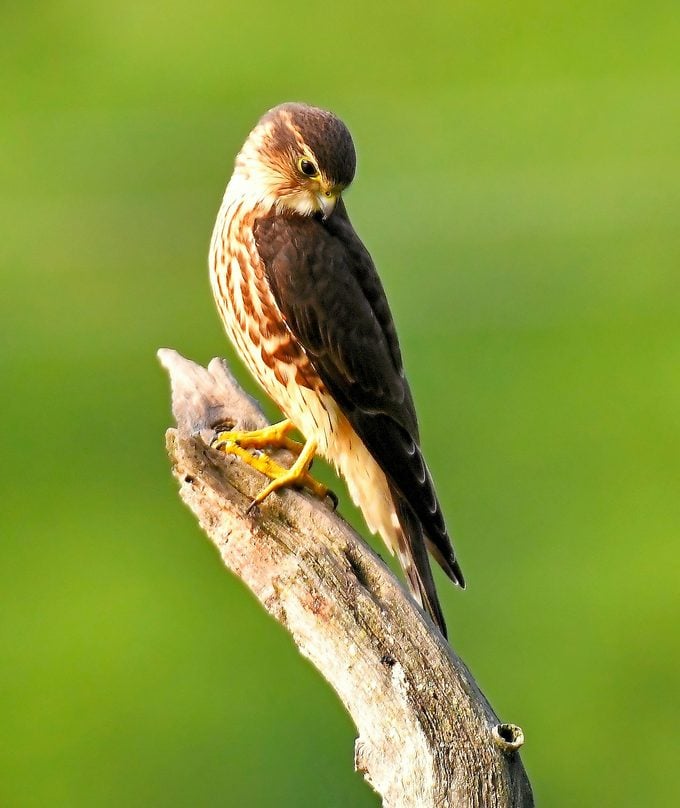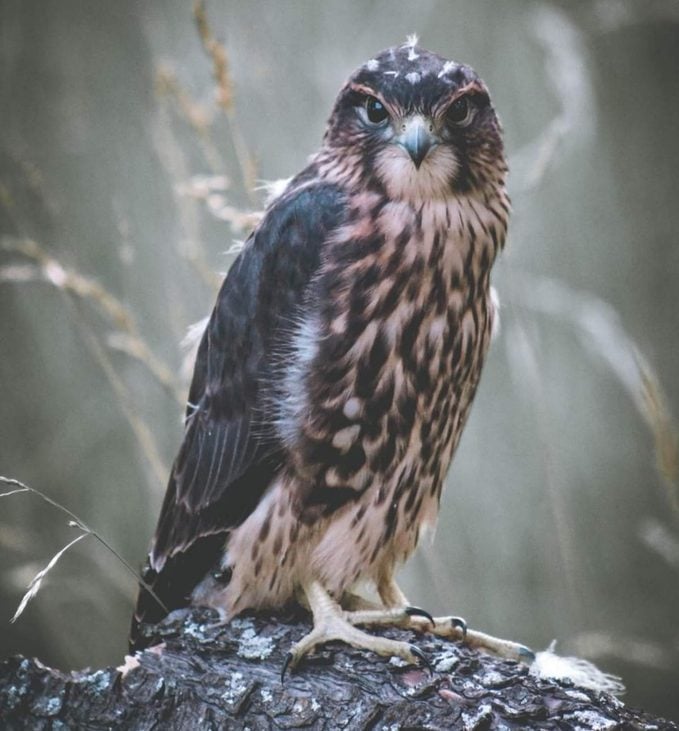Meet the Merlin: Falcon on the Hunt
Updated: Oct. 11, 2023
Learn about the merlin falcon: a stocky, swift bird of prey with medieval European ties. Plus, are they connected to the sorcerer Merlin?
What Does a Merlin Look Like?

To identify a merlin, look for a stocky, streaky, dust-colored falcon between the size of a pigeon and a jay. Males’ overall coloration is grayish; females are brown. The bird’s chest is heavily streaked with white and brown, and the tail, from the underside, is streaked black. Most birds will also have a thin black or white “eyebrow” above its dark eyes.
Based on geographical location this coloring might vary slightly, since there are several different merlin subtypes.
Merlins are stocky to be sure, but the American kestrel is the smallest falcon.
Merlin Range and Habitat

To find a merlin in the United States, you’d be best to go to the Pacific Northwest, Idaho or Montana; that’s the only part of the country where merlins are year-round residents. In California, the Southwest and along the Gulf coast, they’re commonly spotted during nonbreeding season. The rest of the country has the best chance to see them during migration.
Merlins tend to live in open woodlands with conifers. During migration, they’ll also be found in wide-open spaces and even open prairie backyards, if they provide a suitable habitat to hunt. In recent years, due to the nesting behavior of other birds, merlins have moved closer to cities and urban habitats to nest.
Discover fascinating falcon bird facts you should know.
Merlin Falcon Diet and Nesting

Unlike many other raptors who feed on a variety of small mammals, merlins typically eat other birds. Known for watching from a perch and then swooping out to catch their meal in midair, merlins dine on small, commonly found birds such as house sparrows, bohemian waxwings, and small shorebirds. They’ll also eat dragonflies and a more stereotypical raptor diet as necessary, including rodents and even bats.
In general, a merlin falcon doesn’t build its own nest. Instead, it’ll take over an existing old nest from a crow, magpie, or hawk. Rarely, a merlin might nest on the ground or in a tree cavity.
The female lays a clutch of four to five eggs, which she’ll incubate for up to about five weeks. Because merlins are adaptable and use crow nests, they’re sometimes spotted in urban areas where crows have nested before.
Check out essential hawk identification tips for birders.
Merlin Calls and Sounds
A merlin falcon gives a high-pitched klee-klee-klee call of varying lengths. When made quickly enough, it can sound somewhat like a shrill laugh.
Don’t miss these simply stunning pictures of hawks.
Merlin Facts in History
It might come as a surprise to learn that merlins have been connected to humans for a very long time—back to the middle ages, in fact. Then, merlins were used by European noblewomen for the wealthy pastime of falconry: specifically, hunting skylarks.
While the Arthurian wizard and the bird share a name, they’re not related or linked to each other and derived the “merlin” name through differing etymological processes. The spellbinding wizard of legend (and main character of the popular BBC television show) was named for a real-life bard; the falcon gets its name from the French esmerillon, meaning “falcon.”
Next, learn how to identify a red-tailed hawk.




















